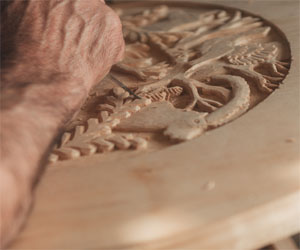


Stitching Timeless Craftsmanship
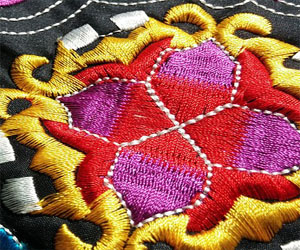
Traditional needlework, a time-honored craft that has transcended generations, stands as a testament to the enduring charm of handcrafted artistry. As contemporary society races toward automation and digital technologies, the gentle, rhythmic art of traditional needlework remains firmly rooted in our history, enriching our lives with its elegance and cultural significance.
The Essence Of Traditional Needlework: Traditional needlework encompasses a wide range of handcrafted techniques, such as embroidery, cross-stitch, needlepoint, quilting, and crewelwork. It revolves around the precise manipulation of a needle and thread, creating intricate designs and patterns on fabric. These stitches, often passed down through families and communities, reflect a deep connection to heritage and an enduring commitment to craftsmanship.
Historical Roots: The origins of traditional needlework can be traced back centuries, with evidence of embroidered textiles dating as far back as the ancient Egyptians and Chinese dynasties. Throughout history, women (and men) have used their skills in needlework to embellish clothing, linens, and decorative items, often showcasing cultural motifs and symbols unique to their regions.
A Cultural Tapestry: Traditional needlework is a rich tapestry that weaves together the customs, beliefs, and aesthetics of different cultures. From the vibrant colors of Mexican embroidery to the delicate stitches of Japanese sashiko, each style carries a piece of its cultural heritage. It's a means of preserving and passing down the stories of a community, one stitch at a time.
Family Heirlooms: One of the most beautiful aspects of traditional needlework is its role in creating family heirlooms. Hand-embroidered tablecloths, quilts, and samplers have been cherished and passed down through generations, connecting the past with the present and ensuring that the skills and artistry of ancestors live on.
Contemporary Revival: In recent years, traditional needlework has experienced a resurgence in popularity. Many people, especially the younger generation, have taken up these crafts as a means of self-expression and creative fulfillment. The resurgence has also been fueled by the desire for unique, handmade items in an age of mass production.
Preserving Traditional Skills: Organizations and individuals around the world are dedicated to preserving and promoting traditional needlework techniques. Workshops, classes, and exhibitions serve as platforms for keeping these skills alive, passing them on to new generations, and appreciating the artistry involved.
Embracing Imperfections: Traditional needlework teaches us to appreciate imperfections as part of the charm. Each stitch tells a story, and slight variations give each piece character and depth. It's a gentle reminder that perfection lies in the uniqueness of the handmade.
Traditional needlework is a priceless cultural treasure that continues to evolve while remaining deeply rooted in history. It reminds us of the artistry, patience, and devotion that go into each handcrafted piece. As we celebrate and embrace the timelessness of traditional needlework, we pay homage to the countless hands that have stitched and woven threads of tradition, culture, and love into our lives. Whether you are an experienced needleworker or a curious novice, exploring the world of traditional needlework is a journey that will forever enrich your appreciation for the art of craftsmanship.
The Art And Science Of Brewing
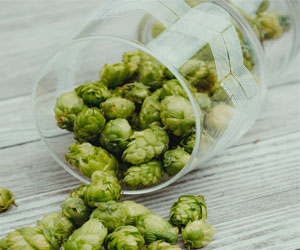 Another crucial aspect of beer craftsmanship is quality control. Craftsmen continually monitor their brews throughout the fermentation and conditioning stages, ensuring consistency and flavor stability. They understand that a small deviation in the brewing process can result in a vastly different beer, and maintaining the intended flavor profile is paramount.
Another crucial aspect of beer craftsmanship is quality control. Craftsmen continually monitor their brews throughout the fermentation and conditioning stages, ensuring consistency and flavor stability. They understand that a small deviation in the brewing process can result in a vastly different beer, and maintaining the intended flavor profile is paramount.
In the craft beer movement, beer craftsmanship goes beyond the brewing process. It extends to branding, marketing, and presentation. Craft breweries often take pride in unique packaging, labels, and taproom aesthetics, offering consumers a complete sensory experience that complements the liquid inside the bottle or glass.
Craftsmen also embrace innovation. They experiment with new ingredients, techniques, and styles, pushing the boundaries of what beer can be. This spirit of innovation has led to the creation of entirely new beer categories, such as sour ales and fruit-infused brews, expanding the palate of beer lovers.
Beer craftsmanship is a blend of tradition, science, and artistry that elevates brewing from a mere beverage production to a true craft. The dedication to sourcing the finest ingredients, the mastery of brewing techniques, and the passion for creating exceptional flavors are all facets of the craftsmanship that defines the world of beer. Whether it's a small, family-run brewery or a larger craft beer producer, the commitment to quality and the pursuit of excellence is the common thread that unites all beer craftsmen. This age-old tradition continues to evolve and thrive, offering beer enthusiasts a diverse and exciting world of flavors and experiences to explore. Cheers to the craftsmanship that makes beer a timeless and cherished art form.
Elevating Woodworking To The Next Level
 Unparalleled Beauty: Hardwood is prized for its unparalleled beauty. The wood's grain patterns, color variations, and intricate figuring make it an ideal choice for crafting. Whether you're creating fine furniture, ornate carvings, or decorative inlays, the natural aesthetics of hardwood add a level of elegance and sophistication that is unmatched.
Unparalleled Beauty: Hardwood is prized for its unparalleled beauty. The wood's grain patterns, color variations, and intricate figuring make it an ideal choice for crafting. Whether you're creating fine furniture, ornate carvings, or decorative inlays, the natural aesthetics of hardwood add a level of elegance and sophistication that is unmatched.
Durability And Longevity: Hardwood is renowned for its durability. It can withstand the test of time, making it an excellent choice for heirloom-quality pieces. Items crafted from hardwood are not only beautiful but also practical and built to last. This longevity is one of the reasons why woodworking enthusiasts and artisans alike gravitate towards hardwood.
Rich Selection Of Species: One of the remarkable features of crafting with hardwood is the vast selection of wood species available. Each species offers unique characteristics in terms of color, grain, hardness, and workability. From the deep, warm hues of mahogany to the light, creamy tones of maple, there is a hardwood species to suit every project and style.
Versatile Applications: Hardwood is highly versatile and can be used in a wide range of applications. It's suitable for crafting fine furniture, cabinetry, flooring, musical instruments, and even intricate carvings. Its versatility enables artisans to explore various woodworking techniques and create diverse types of pieces, from functional to decorative.
Challenges And Rewards: Crafting with hardwood presents challenges due to its density and hardness, which can make it more difficult to work with compared to softer woods. However, it's precisely these challenges that lead to great rewards. Mastering the art of crafting with hardwood demands precision, skill, and patience, resulting in pieces that exhibit exceptional craftsmanship.
Techniques For Discerning Palates
 Clarity: Assess the clarity of the wine. A hazy appearance might indicate issues with the wine's production, while crystal clarity suggests quality and careful handling.
Clarity: Assess the clarity of the wine. A hazy appearance might indicate issues with the wine's production, while crystal clarity suggests quality and careful handling.
Viscosity: Swirl the wine gently in the glass and observe the "legs" or "tears" that form on the side of the glass. Thicker legs indicate a higher alcohol content or residual sugar, which can provide clues about the wine's body.
2. Aroma Exploration: The aroma, or bouquet, of a wine is a critical aspect of the tasting experience. Swirl the wine in your glass to release its aromas, then take a moment to inhale. Wine's bouquet can be quite complex, and it's where the magic begins.
Primary Aromas: Primary aromas are derived from the grape variety itself. For instance, Chardonnay often exhibits scents of green apple or citrus, while Cabernet Sauvignon might have blackberry or black currant notes.
Secondary Aromas: These come from the fermentation process and often include scents like bread, yeast, or vanilla, particularly in the case of oak-aged wines.
Tertiary Aromas: Tertiary aromas develop during aging and might include earthy, spicy, or nutty notes.
3. Sip And Savor: Take a small sip of the wine and let it coat your palate. Assess the wine's taste, noting its flavors, acidity, sweetness, and tannins. Consider the balance and harmony of these elements.
Flavors: Describe the flavors you perceive, which can range from fruity and floral to earthy and spicy.
Acidity: Assess the wine's acidity, which can make it feel crisp and lively on your palate.

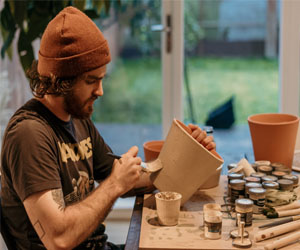
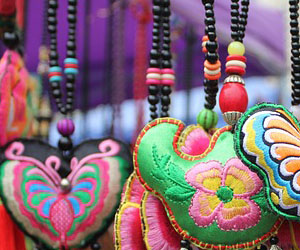
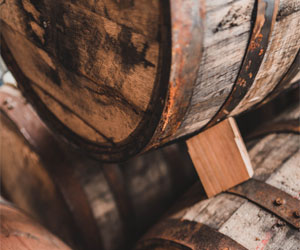


Industry Insights
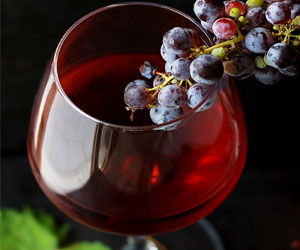 Terroir's Influence: Terroir, a French term referring to the unique combination of soil, climate, and geography in a particular region, plays a pivotal role in winemaking. Each wine region has its distinct terroir, shaping the character of the grapes and, consequently, the wine. The influence of terroir allows for a profound connection between the land and the wine, and it's an essential concept for understanding wine industry nuances.
Terroir's Influence: Terroir, a French term referring to the unique combination of soil, climate, and geography in a particular region, plays a pivotal role in winemaking. Each wine region has its distinct terroir, shaping the character of the grapes and, consequently, the wine. The influence of terroir allows for a profound connection between the land and the wine, and it's an essential concept for understanding wine industry nuances.
Sustainability And Organic Practices: In recent years, there has been a growing emphasis on sustainable and organic winemaking practices. Consumers are increasingly conscious of the environmental impact of their choices, and wineries are responding by adopting eco-friendly approaches. This shift towards sustainability reflects a broader commitment to preserving the natural balance and ensuring the longevity of wine production.
Wine Tourism: Wine tourism has blossomed into a thriving sector of the wine industry. People are not only enjoying wine but also seeking experiences that bring them closer to the heart of winemaking. Vineyard tours, wine tastings, and winery visits have become integral components of the industry, allowing enthusiasts to connect with the process and the people behind the wine.
A Symphony Of Flavors And Aromas
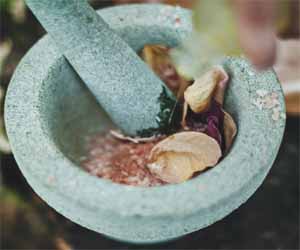 The beauty of herb gardens lies not only in the aromatic and flavorful treasures they offer but also in the diverse range of herbs that can be cultivated. These multifaceted gardens are a testament to the incredible variety of plants that can be grown for culinary, medicinal, and aesthetic purposes. In this article, we'll explore the world of herb garden diversity, celebrating the rich tapestry of flavors, aromas, and colors it can bring to your life.
The beauty of herb gardens lies not only in the aromatic and flavorful treasures they offer but also in the diverse range of herbs that can be cultivated. These multifaceted gardens are a testament to the incredible variety of plants that can be grown for culinary, medicinal, and aesthetic purposes. In this article, we'll explore the world of herb garden diversity, celebrating the rich tapestry of flavors, aromas, and colors it can bring to your life.
The Many Faces Of Herb Diversity
Herb gardens are a treasure trove of plant diversity. They encompass a vast array of herbs, each with its unique characteristics and uses:
Culinary Herbs: These are the culinary classics like basil, oregano, rosemary, and thyme, which infuse dishes with diverse flavors, from sweet and fragrant to earthy and robust.
Medicinal Herbs: Herbs like chamomile, lavender, and echinacea have been used for centuries for their healing properties. They offer a diverse range of remedies, from soothing teas to natural salves.
Aromatic Herbs: Lavender, mint, and lemon balm are renowned for their captivating aromas. They are often used for creating aromatic oils, perfumes, and potpourri.